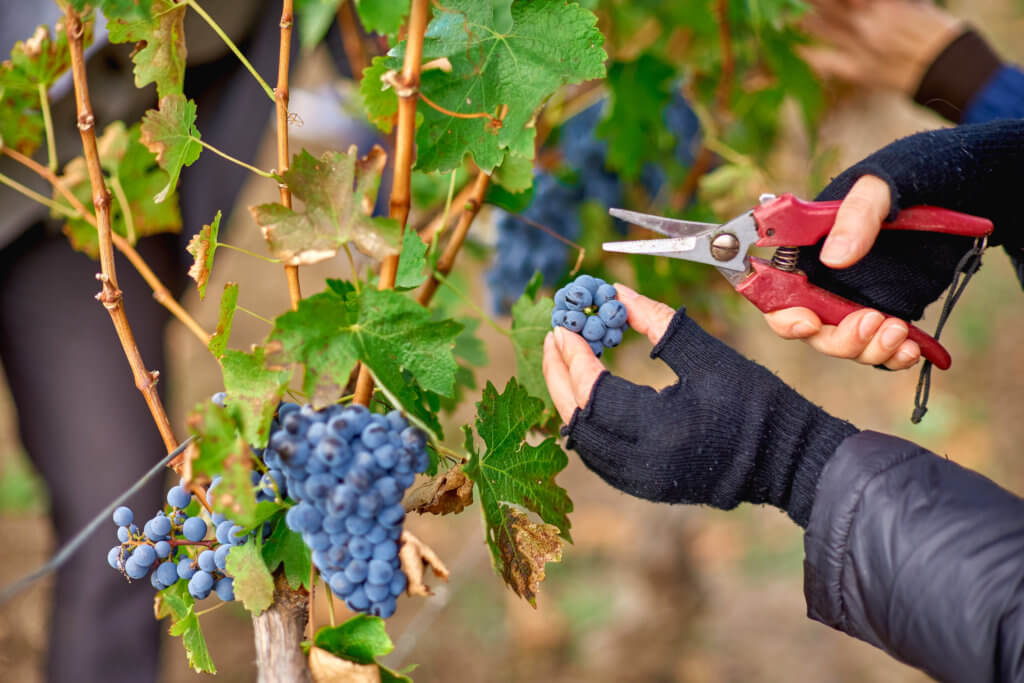Low Intervention Wines
What’s the Difference Between Filtered and Unfiltered Wines?
What’s the difference between filtered wines and unfiltered wines?
Wine is a liquid in limbo – a step on the slippery slope that runs from grape juice to vinegar. You see finished wine is not a naturally stable product, it’s always at risk of destabilising, of going bad, and anything left behind in the wine following fermentation increases this risk. Hence the need to filter any badness out. And the difference between filtered and unfiltered wines.
This was one of the questions that was asked during a recent isolation virtual wine tasting with Elliot Awin. And we thought we’d pick this thread up and run with it.
Choosing unfiltered wine or filtered wine
Whether you opt for a filtered or unfiltered wine is normally down to personal preference.
Filtering doesn’t necessarily make a wine better or worse – advocates of unfiltered wines won’t agree with that, as they believe that filtration strips wine of its flavour, aroma and complexity, not to mention messing with its texture and mouthfeel.
And yes, filtering does remove all of the particles that can cause your wine to be cloudy in appearance, but filtering also stabilises your wine and was de facto in modern winemaking up until quite recently.

However, with advancements in modern winemaking and a better understanding of the winemaking process, including how to prevent wines from spoiling once bottled, means unfiltered wines aren’t as unstable as they once were. Allowing them to become more mainstream.
Payten and Jones wines
The particular wine that was being imbibed at the time the above question was asked was a Payten and Jones Valley Vignerons Series Sangiovese 2015, a low intervention wine that could be described as a little murky, a little quirky and definitely not perfect (by industry standards).
All of Payten and Jones’ wines are unfiltered – in fact, there’s a minimal intervention that goes into producing them, meaning sometimes you’ll find a little bit of sediment at the bottom of your glass.
And that’s perfectly OK. In fact, it’s more than OK, it’s what’s considered normal for an unfiltered wine.
So if sediment is normal and doesn’t affect the flavour of the wine, why aren’t all wines left unfiltered?
Well, it’s not quite that simple.
Yes, making wine is a pretty basic process – you chuck a load of grapes into a vat, crush them, add in some yeast (if you aren’t relying on wild fermentation) and let nature do its thing.
But when the fermentation process is complete, you’re left with a vat of wine replete with tannins, proteins and dead yeast to contend with. And you don’t want to drink that.
Filtered wines
Filtration in conventional winemaking is when fermented wine is passed through a screen to sieve all the unwanted leftover grape must and fermentation particles out. The filtration process is designed to improve the clarity of the wine.
Filtering a conventional wine usually happens in two steps – first the larger particles are pushed through a membrane, sieving it to clarify it, and then secondly, during a process known as fining, the smaller bacteria and microbes are removed prior to bottling, stabilising the wine.
Fining wines
Fining is the process of adding substances into the wine to which proteins, yeast and sediment – the unwanted particles and microbes stick to, causing them to clump together, making them heavy and sink to the bottom of the barrel or storage tank.
Fining can be what stops a wine from being suitable for vegetarians and vegans. Common fining agents include egg whites, isinglass (dried fish bladders), bentonite and casein.
Learn more about vegan wines and read our articles:
Most natural wine producers don’t fine their wine after racking it as they say the remaining particles impart flavour and texture to the end product. But that doesn’t mean that when you choose to drink unfiltered wine that you’re going to pour yourself a glass of grape must and dead yeast.
Far from it.
Find out more about:
Racking wine
Unfiltered wines have their impurities removed too, but this is done through a process known as racking.
Racking is where wine is left to sit for a time (the tanks aren’t shaken or moved), allowing the particles to fall and settle naturally at the bottom of the tank through gravity. The clear wine above is then siphoned off or ‘racked’ to another tank, leaving the sediment behind.
But that isn’t the end of the process for ‘natural’ wines.
Vintners then have several options open to them to further reduce the risk of their unfiltered wines spoiling in the bottle. One is to have the unfiltered wine go through a second fermentation called Malolactic Fermentation, a process which transforms the wine from a fruity, fresh flavoured beverage into a nutty, creamy one. Another is to increase the amount of sulphites added into the wines to kill off any microbes and stabilise it.
Learn more about sulphite free wine.
Filtered wines versus unfiltered wines
So is one better than the other? We couldn’t possibly comment.
What we can say is filtered or unfiltered, whichever wine you choose from Pull The Cork is guaranteed to knock your socks off. Join our monthly wine subscription and not only receive some epic organic and natural wines delivered straight to your door, but you also get 15% off all of our wines.
Cheers!

